Connie Bombaci's Blog, page 3
April 29, 2021
Using a Lure AKA Treat with deaf dogs
This article is courtesy of https://yourdogadvisor.com/train-dog-spin/ and Jennifer Stark at Happy DIY Home (HAPPYDIYHOME.org) and is gratefully received.
NOTE: Pictures have been changed for simplicity. Thank you! These ideas are wonderful to use with our precious deaf dogs. Always remember that the only difference between our hearing and deaf dogs is the method of communication.
Creating an Effective LureWhether you are training for obedience-centered commands like sit and stay or fun tricks like roll over and wave, luring is one of the most common methods of getting dogs to perform different behaviors. However, if you are new to positive reinforcement training or new to training altogether, you may not be familiar with what a lure is.

Think of luring as greyhound coursing, just in a much more condensed form. Your hand is the fake rabbit that needs to move in a way that will get your dog to walk, jump, spin, or roll in the exact way you want them to.
In more traditional, outdated forms of training, dogs were forced to perform certain behaviors through a few different techniques. The most common was body manipulation. One simple example of this would be pushing on the dog’s bum to get them to sit.
Negative punishment is another way trainers used to get their dogs to do what they wanted. If the trainer wanted the dog to heel, for instance, they would use a choke chain and leash to make the dog uncomfortable any time they were out of position. The only way to escape that discomfort was to walk by the handler’s side.
These same behaviors can easily be accomplished through a much simpler, more positive way of training known as luring. And because luring doesn’t cause anxiety or pain, it allows dogs to learn behaviors much more quickly and perform them more reliably in the future. And since the dogs have to complete the movements themselves instead of being manipulated into different positions, they are more likely to connect the behavior with the command.
Luring involves using a treat or toy to entice your dog into different positions, much like using a carrot to lure a horse into their stall. While the concept itself is very simple, creating an effective lure does take a little knowledge and practice.
Keep Your Dog InterestedThe perfect lure involves pulling your dog along by the nose using a high-value reward that they want to follow. Of course, they aren’t following the reward just for fun, they are following it because they want to eat or play with it.

Some dogs are highly motivated by toys while others only care about treats. Play with different items to see which will work the best for luring your dog.
If you are constantly pulling the lure out of your dog’s reach, they are likely to quickly give up on following it. Since you can’t lure your dog with something they won’t follow, you have to keep them interested in the reward. There are two key ways you can accomplish this.
First, make sure you choose a treat or toy that your dog gets very excited about.
Consider this: Your friend offers you a piece of gum. When you reach for it, they snap their hand back and laugh. What do you do? You probably give them a dirty look and walk away without the gum. But what if your friend offered you tickets to see your favorite band in concert, and then snapped their hand back when you reached for them. What would you do? Keep trying to get them, probably. Maybe even tackle your friend and pry them out of their hands.
That’s close to the reaction you want your dog to have when you present them with the lure.
The second way to keep your dog interested is to keep your lures short and reward your dog frequently by giving them the treat or letting them play with the toy. This not only keeps your dog from thinking you are just tricking them, but it also keeps them motivated to keep training.
If you are teaching your dog to walk nicely on leash, for instance, instead of luring them to walk by your side the full length of the room and then rewarding them, reward them every few feet. As they get the hang of the behavior, slowly increase the distance between rewards.
Don’t Let Your Dog Get Hyper-FocusedWhile an enticing lure is key, at the same time, you don’t want your dog to become too focused on it. If all your dog can think is, “Oh man, oh man, I need to get that treat, I need it right NOW!” then they are going to struggle to learn whatever you are trying to train them. You may be able to lure them into position, but if all they are thinking about is the lure, they probably didn’t even notice they moved.
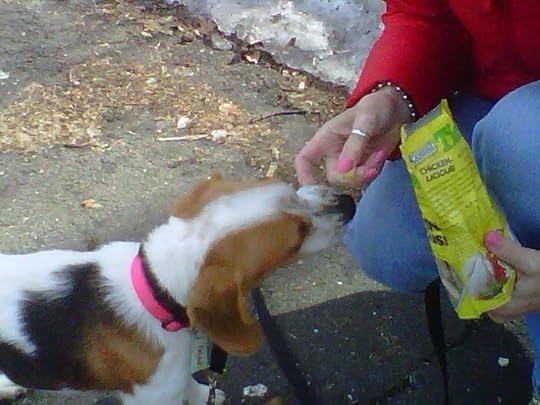
There is such a thing as being too ball motivated. If your dog loses their mind every time you break out the tennis ball or the hot dogs, find something a little less valuable to use during training.
If your dog is constantly trying to chew the lure out of your hand or jumping on your arm to get control of it, you may need a slightly less valuable lure. Play with different types of treats and toys. You may even want to use different types of lures for harder behaviors and easier ones.
If your dog is right on top of your lure, you may also need to move your hand faster or hold it slightly above or below their mouth to create a tiny bit of distance. This will help them stay more aware of their own movements and should increase how quickly they pick up new behaviors.
How to Remove a LureJust when you get your lure down for a new behavior, it’s usually time to get rid of it. As frustrating as that is, it is an important step to getting your dog to complete a behavior from a simple cue rather than exaggerated hand movements. Unfortunately, this can be one of the most difficult pieces of lure training.
Timing is EverythingThe first step to successfully removing your lure from the new behavior is to pinpoint the right time to start removing it.
If you remove the lure too early, your dog is going to get confused and start offering rough approximations of the behavior you want. Removing the lure too early on your dog’s rollover is likely to lead to a dog that lays down and puts their head awkwardly on the floor and then jumps up looking for a treat.
Pay attention to your dog as you train. Are they completing the behavior because they understand what you are asking? Or are they just following your lure? Use the lure as long as your pup needs it, but fade it out as soon as they are ready.
If you remove it too late, not only have you wasted some prime training time, but your dog may become too reliant on the lure.
The best time to start removing the lure is when your dog seems to be anticipating the behavior. They might show this by moving faster than the lure, or by focusing less on it. For instance, if you are teaching your dog to sit and suddenly they are plopping their bum down as soon as you start to lift your hand up, they are ready to say goodbye to the lure.
Fading Your LureThere are a few different techniques you can use to get rid of or “fade” a lure. You may find that some work better for your dog on certain tricks or that you need to use multiple techniques on one behavior. You won’t know exactly what’s right for your dog until you try different methods.
In many cases, you might find that running through the full lure, but doing it quicker will help reduce your dog’s need for the lure. If you are working on roll over and your dog is ready, you might quickly drop your hand to the ground to get them to down, wait for them to catch up, then quickly circle your hand over their head to get them to roll.
Your dog won’t be able to follow the lure the whole time, but it will provide enough of a guide to get them moving in the right direction. As they are able to do more and more of the trick by themselves, you can complete the lure quicker and quicker.
Luring may sound complicated, but with a little practice, just about anyone can do it successfully.
You can also try removing the end of the lure and letting your dog complete the behavior on their own. If you are teaching your dog down, for instance, you would bring the lure to their nose as they sit and begin dropping your hand to the ground, but stop short of pulling your dog into a down. With each repetition, you can remove more and more of the lure until you are hardly moving your hand at all.
For some behaviors, the best way to fade the lure is to just stop doing it all at once. This doesn’t work in all situations but can be effective in the right ones. For instance, you might find that your dog gets overly focused on the lure during the training for spin. If that happens, it can be very difficult to fade the lure because your dog will try to follow it no matter how fast it goes or when it stops. That can result in half spins or spins that start in one direction and end going the other.
In a case like this, you may want to simply present your dog with a reward then stand there ignoring them until they offer the behavior you want. It may take a few minutes for them to offer the right one, but, since they were just being rewarded for it, they should eventually give it a shot.
>>>Trick training is a great way to stimulate a high energy dog. Here are more great tips for surviving a hyper pup.
As an additional note for our deaf dogs; our deaf dogs are incredibly smart and loving. They want to be loved and accepted just like any other pup. With wonderful care and understanding, our deaf dogs can become wonderful family members.
April 12, 2021
Love and Acceptance of Deaf and Blind Dogs at its Best
My heart is always warmed and filled with a real feeling of overflowing love, acceptance, and hope whenever I read or witness kindness and support being offered God’s precious creations. When children are learning to lend a hand to those in need, such as our deaf, blind dogs, these wonderful feelings pour like a magnificent waterfall placed smack dab in the middle of the most beautiful types of kindness, love, and acceptance.
No matter our age, all of us can learn from these incredible preschool students to open our hearts and do whatever we can to help and save others, no matter what.
Sit! Read! Enjoy!

Elsie is a three-year-old deaf and partially blind Dalmatian who was “unadoptable” until That Place Called Home (CA) diligently worked to locate her forever home located clear across the country.
Preschool raises money for blind, deaf dogsArticle from the Daily Journal, April 7, 2021
Kevin Jenkins, Managing Editor
https://dailyjournalonline.com/
Children attending Farmington Presbyterian Church's Window Tree Preschool received plenty of warmhearted entertainment Thursday morning courtesy of several furry friends who, along with their handlers, dropped by the preschool to celebrate a very special occasion.
That day marked the conclusion of Window Tree Preschool's third "Pennies for Puppies" fundraiser for "Speak St. Louis," a rescue organization for Australian Shepherds that specializes in promoting double merle awareness.
The term "double merle" refers to a dog bred by two merle-colored parents. Most people are unaware that when two merles of any breed are bred together, each puppy has a 25% chance of being born as a double merle.
Born with excessive white coloration, these dogs are known to have eye abnormalities, hearing impairments or sometimes both. Double merle puppies are often dumped into shelters or left to fend for themselves by careless breeders.
Common breeds with the merle trait include Australian Shepherds, Border Collies, Catahoula Leopards, Chihuahuas, Collies, Dachshunds, and Great Danes, among others.
While the dogs may have been unable to see or hear very well, they were masters at giving and receiving love and attention from the excited children, workers and parents who filled the room with laughter and squeals of delight.
The children gently petted and held their special guests as their faces beamed with happiness.
"We have been doing this since 2019," said Preschool Director Tammy Moriarty. "One of our teachers that used to work here adopted a dog through them. We've been raising money for them. We collect as many pennies, nickels, dimes — anything we can — every spring for them."
Moriarty explained that the children are given empty Parmesan cheese containers in which to collect money for the rescue.
"Every morning we spend about 15 minutes counting whatever money they bring in — so, we're working on counting too and we're learning about different coins," she said. Then at the end, we take it all to the bank and cash it in so we don't have to give them a thousand pounds of coins."
This year, the children raised a total of $1,191.43 for Speak St. Louis.
"I think our first year we maybe had $400 or $500 and we've just gotten bigger and bigger every year," Moriarty said. "That's a lot of pennies! We're just so glad the kids can raise money for something and see where their money is going. We always like to do things like that."
As the children gathered around to present the check to Judy Duhr of Speak St. Louis, tears began welling up in her eyes.
"It means a lot to us," she said. "We haven't been able to do any events or anything since COVID started, so it's amazing. These kids are so kind and it helps us to help a lot more dogs with special needs."
March 19, 2021
Our Dogs' Aggression
Hogan was extremely fortunate enough to have met and been treated by Dr. Nicholas Dodman at the Tufts Small Animal Hospital in Massachusetts back in 1994. Hogan's success story flourished under his attentive and dedicated care. No stone was left unturned, and he remained in constant contact with us for months. His interest in Hogan peaked because of Hogan's deafness and ability to understand American Sign Language—Tufts' first dog to do so.
Our connection has continued, and I am honored that he has become a wonderful, loyal friend who has offered his invaluable gifts of knowledge and expert experience. So much so that he and his staff have graciously and generously permitted me to share the Center for Canine Behavior Studies (CCBS). Their studies reveal the newest results in viewing and addressing behaviors of our precious pups.
I believe that most of us have encountered or known a pup who displayed some kind or variation of aggression. Often, the reason and treatment of this behavior is a mystery, and we do our best to find some resolution. This latest report definitely helps shed pertinent light that will help our beloved dogs.
Journal of Veterinary Behavior
Available online 5 March 2021

"If veterinarians, behaviorists, and trainers avail themselves of the information gleaned from our study, we believe the awful problem of aggression will be more successfully addressed. This, in turn, will help keep dogs out of trouble and in their homes for life.
That was and always will be our goal."
- Dr. Nicholas Dodman CCBS President/CEO
The Center for Canine Behavior Studies, Inc. is proud to announce that the Journal of Veterinary Behavior: Clinical Applications and Research (Elsevier) has published their research paper titled, "An investigation into the effectiveness of various professionals and behavior modification programs, with or without medication, for the treatment of canine aggression". The paper was written by the CCBS team of Ian R. Dinwoodie, Vivian Zottola, and under the leadership of President/CEO Nicholas H. Dodman. The paper follows CCBS' award-winning paper "Demographics and Comorbidity of Behavior Problems in Dogs" published in the Journal's Volume 32, July–August 2019, Pages 62-71.
The study was constructed to address the most efficacious behavior modification programs, training equipment or technique to determine what approaches stand the best chance of success based on empirical evidence. The study investigated 963 dogs whose owners (n = 800) described as having at least one form of aggressive behavior.
"We were surprised to find that a significant number of aggressive dogs had medical problems underpinning their aggressive behavior. Lesson 1: Always check in with your veterinarian first," says President/CEO of CCBS, Dr. Nicholas H. Dodman, DACVB
The investigation into the effectiveness of various professionals and behavior modification programs, with or without medication, for the treatment of canine aggressionHighlights
• Fifteen percent of dogs brought to veterinarians for advice about behavior problems were found to have an underlying medical problem contributing to the dog's misbehavior.
• Behavior modifications were found to be the most consistently beneficial approach to treating all forms of aggression.
• Of the owners that sought help from a DACVB, a majority (81%) found the advice to be helpful for treating their dog's aggression.
Abstract
In this follow-up study we investigate a subset of 963 dogs whose owners (n = 800) described as having at least one form of aggressive behavior. We were particularly interested in learning which types of professionals, if any, were sought for assistance for the presenting behavior. Owners were also asked to indicate the resolutions employed, including training methods and equipment, behavior modification programs, behavior modification and training techniques, medications, and forms of alternative medicine. Using a self-reported questionnaire, both cohesive and dispersive aggressive behaviors were investigated including conflict aggression (CA), interdog housemate aggression (HA), fear aggression toward people (FA), fear aggression toward dogs (FAD), and predatory aggression (PA). Fifty-three percent of dogs with reported aggressive behaviors were mixed breeds. The study sample was 56% male, a majority (91%) of which were neutered. Most commonly, the dogs with reported aggressive behaviors were the sole dog in the household. Fifty-six percent of dogs were brought to at least one professional for remedial assistance. Of the owners that sought help from a DACVB, a majority (81%) found the advice to be helpful for treating their dog's aggression. Fifteen percent of dogs brought to veterinarians for advice about behavior problems were found to have an underlying medical problem contributing to the dog's misbehavior.
As far as training equipment was concerned, we found that anti-bark collars and muzzles decreased the probability for successful treatment of aggression. Thirty-six percent of dogs were exposed to behavior modification programs as a form of treatment and an association was found between employment of a systematic desensitization and counterconditioning for treatment of overall aggression. When employing behavior modification training techniques, response blocking was found to decrease probability for improvement when employed for treatment of fear aggression to other dogs and predatory aggression. Improved dog-owner communication, habituation, relaxation protocols, and short and frequent training sessions were the most consistently beneficial behavior modification techniques. At least one beneficial behavior modification technique was identified for each investigated form of aggression.
Twenty-one percent of dogs received medication as a form of treatment for aggression. Surprisingly, we failed to find any significant associations between treatment response and the administration of specific medications. When investigating alternative medicines, we found nutraceuticals to be helpful when treating overall aggression.
February 6, 2021
Adopt, Don't Shop
The Shelter Dog Promise
Poem by Justine Rose
I’ll wrap you in my arms
To let you know you’re safe
In your bed, you’ll be nice and warm
I promise you’re here to stay.
So many still are waiting
In the shelters, they sit alone
I promise to wear this ring
Until every dog has a home.
December 1, 2020, was a day filled with deep grief and heart-ripping sadness. Our sweet little girl, Judea, took the journey to her forever life in the arms of our Lord and away from the horrific illness that ravaged her body. While this dreadful illness was short-lived, it struck suddenly and offered no mercy. Every effort to diagnosis the cause was thwarted, and the affliction puzzled every one of the specialists who worked determinedly to save our precious pup. Nothing worked. None of the medical community at all three veterinary hospitals had ever witnessed anything like it.
Over the decades, Jim and I have had to say, “Farewell,” to all our beautiful four-legged family members but this felt harder, deeper somehow. Perhaps it was our age. Perhaps we were just not up for losing another magnificent creature who God made — my breath of Heaven. Whatever the reason, we experienced grief that gripped our hearts into deep, relentless despair.
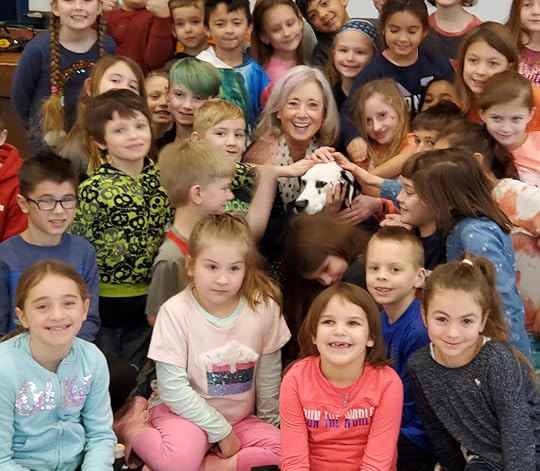
Judea’s unbelievable way of being able to teach others how to be kind was extraordinary, and she left an indelible mark on the hearts of those she met — especially the children.
How could we ever find calm, peace, or the desire to welcome another “at risk” pup into our home? How would we ever find the “right” pup for us?
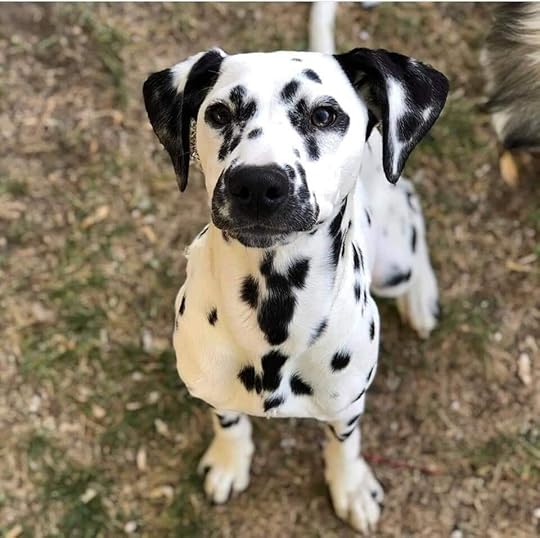
I am blessed to have a wonderful group of social-networking friends who offered sincere condolences, prayers, and support. In the days just before Christmas, I received a message from a member of FaceBook’s Deaf Dogs group. “I’ve got a deaf dog for you!”
Elsie was at the rescue shelter, That Place Called Home, hoping for her forever home. Elsie found us!
Georgine Murphy and Nicole Lea had rescued Elsie from a dire situation and brought her to their rescue shelter where she received wonderful attention, great love, and real acceptance.
One family attempted to adopt her but returned her to the shelter in the short order of a week. She had “too many issues” and an enormous need to work off her extremely high level of energy. Real concern arose that Elsie might be unadoptable.
Dalmatians are known for their high energy level, propensity for deafness, urinary tract issues, and strong spirit. (Elsie has all of these - plus!) Having had three Dals before Elsie, all deaf and with some of these same issues, Jim and I were familiar with the trials and weren’t discouraged from entertaining the idea of adopting this sweet little girl. And when I say, “little,” she only weighs in at about 35 pounds. (Her weight was only 25 pounds when she arrived at the shelter.) Compare that to our Judea who weighed 54 pounds.
Jim didn’t hesitate and believed that Elsie was meant to be ours because she came to us — she found us. We hadn’t searched for her! He simply announced, “Go get her! Bring her home!” and helped set up transportation as soon as possible. We both wanted her to come home without delay.
The problem: Elsie was on the west coast at the California/Oregon state line. Jim and I, on the other hand, live on the East Coast in Connecticut.
Under normal circumstances, finding transportation would have been so much easier. But it was winter and too cold to fly her. Additionally, her size was just a bit too large for her to ride in the passenger cabin with a pet nanny. I am not fond of transporting any animal on an airliner, let alone in the cargo section. Too many risks exist, and the perils are too hazardous.
We explored the private pilots who give their time and resources to fly animals to various parts of the country to their forever homes. However, the season, the weather, and the lack of pilots thwarted this possibility.
Then, the COVID restrictions caused questions, how-to’s, and different requirements across the states.
An incredible member of Facebook’s Deaf Dogs group, Issabella, generously volunteered her time and great efforts to assemble folks who believe whole-heartedly in rescue to form a transportation chain and bring Elsie to Connecticut. This meant that each driver would transport Elsie for a four to six-hour leg of the trip and require at least forty folks. A daunting task! Jim and I wanted desperately to get Elsie home as soon as possible, and this option would take weeks to put together. How could we ever ask someone to take on this enormous mission? Not only that, the timing was terrible. Remember, it was the holiday season. Who would choose to be away from their families and friends?
Our last hope was to find a professional animal transport. After numerous contacts, research endeavors, and telephone calls, Jim and I found a company that worked during the holiday season. So, on Christmas Day, Elsie began her journey cross country. The estimated trip was five days, but the mid-West was suffering from bad winter weather conditions affecting driving. Jim and I, the entire family, and many amazing friends at home and on FaceBook waited not-so-patiently. Biting our nails and waiting by the telephone, every day brought a new delay because of weather and even a breakdown of the truck. UGH!
Hallelujah! On January 2, 2021, Elsie arrived home. She immediately offered kisses and her gentle ways to all of us, best of all to our young grandchildren. All of us fell instantly in love. And just when everything seemed perfect……..
After only two hours of being home, Elsie suffered a terrible seizure and was rushed to the emergency clinic. I felt like I was reliving Judea’s story. Elsie underwent countless blood tests, MRI, ultrasounds, and spinal tap. Jim and I didn’t want any stone left unturned and wanted to continue That Place Called Home’s hard work of giving Elsie every opportunity to live the best life ever. ELSIE DESERVED ONLY THE BEST. Our sweet, precious little girl had to overcome so many obstacles. We determined that she was going to be loved and accepted NO MATTER WHAT:
Despite her special needs of being deaf and blind in her left eye.
Despite her medical issues of being epileptic and prone to crystals in her urinary tract.
Despite her high energy, the habit of pace-paw-dig, and a light addiction in which she chases reflections and moving lights.
No second thoughts. No mountain too high enough. Every worthy effort.
I tell you about Elsie’s adoption to share with you that every adoption, every precious animal saved, brings enormous reward, endless joy, and heart-filling love. Rather than buying, rescue a pup who sits and waits to be loved, to be part of a family. Confused, sad, and anxious, too many sit and wait for someone to love and love them. Too many are sentenced to death because of human behavior and decision. Too many are abandoned, discarded, thrown away.
Whether two-legged or four-legged, every one of our stories is unique. Every one of us is different and has different needs. Adopt, don’t shop, and receive the love that is unimaginable. Adoption is the best option for welcoming a new four-legged family member. As quoted from Two Traveling Dogs, “Rescue is the breed of choice.”
Join the “ring” of love.
Adopt! Don’t shop!
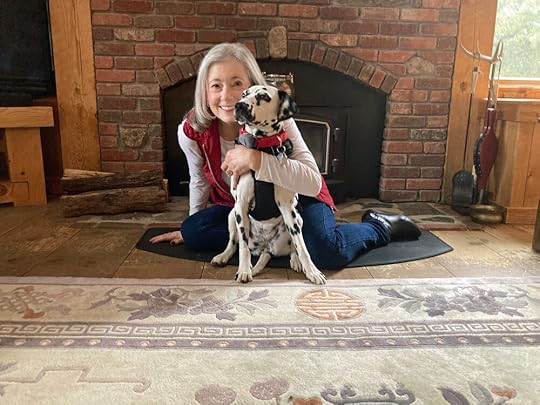
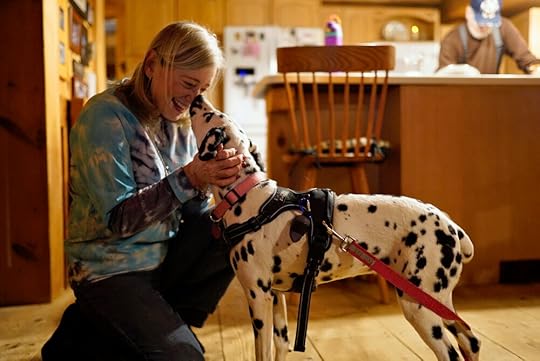
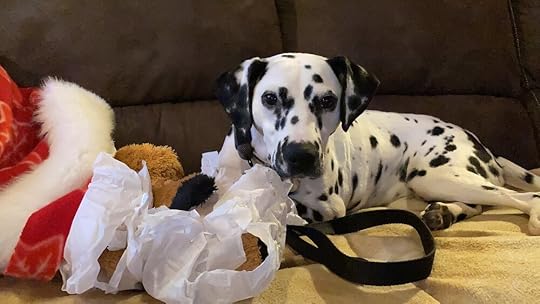
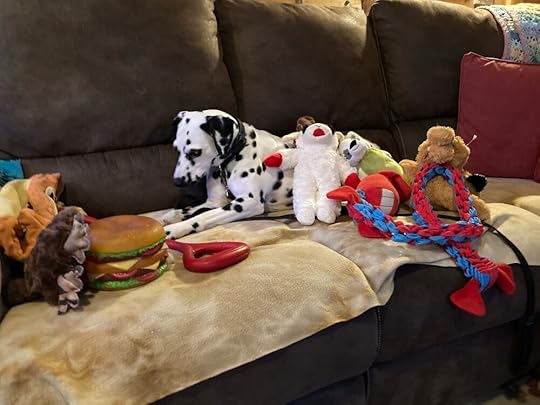

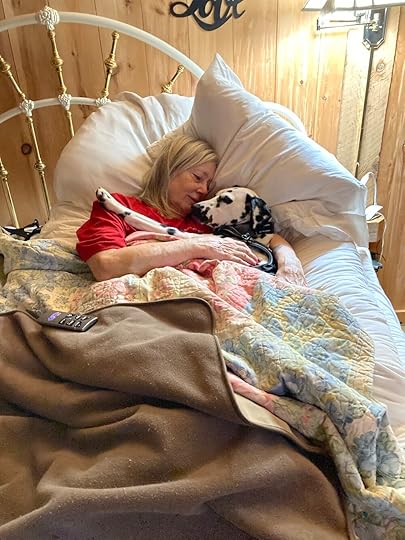
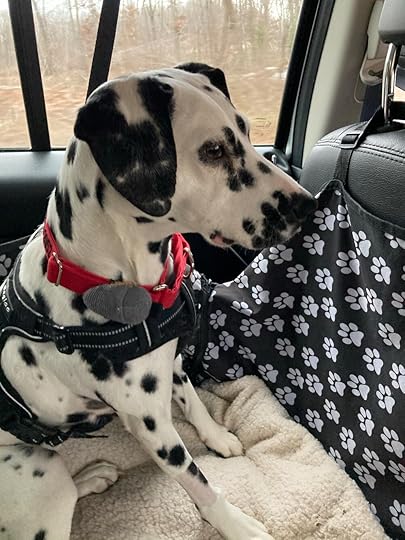
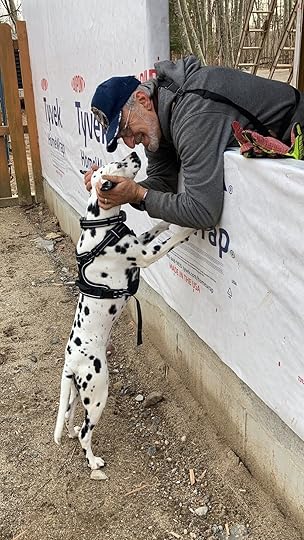

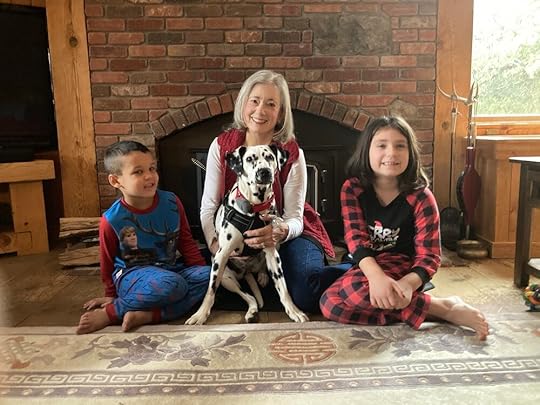


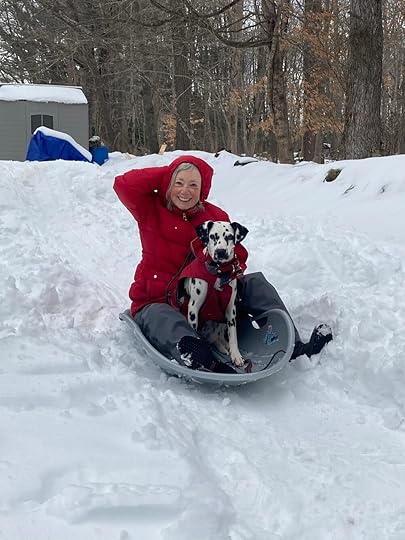
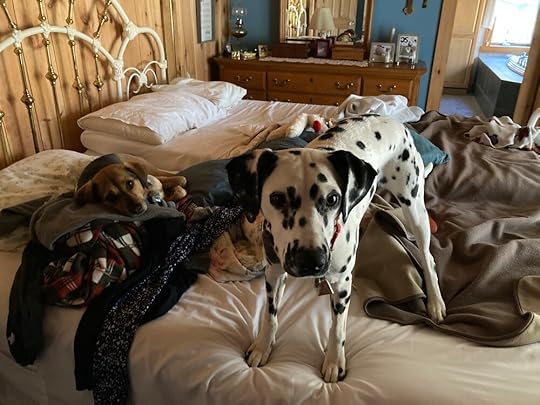
February 1, 2021
Stories That Empower showcases Connie Bombaci

https://storiesthatempower.com/
Stories that Empowershowcases Connie Bombaci and Hogan’s Hope
Sean Farjadi, an inspirational podcaster, honors the work that Connie Bombaci does to bring the message of real acceptance and unconditional love for every one of God’s creations, no matter what the differences. Through her internationally-awarded book, Hogan’s Hope, and Farjadi’s excellent ability to produce outstanding podcasts, the belief in hope is spread and shared.
https://directory.libsyn.com/episode/index/id/8760077
Hi, friends
I want to tell you about a very kind soul, Connie Bombaci.
– She’s the author of a series of books, titled “Hogan’s Hope”
– Connie has rescued numerous orphaned and abandoned animals
– One thing that is so innovative about Connie is that, through sign language, she’s taught deaf dogs to connect and communicate with her.
But, you know what’s even more impressive than her gifts as a writer and animal advocate, is her passion to accept and love others unconditionally. Connie believes that all living beings are worthy of life, love, and happiness. By giving her unconditional love, she empowers others to see and believe they are truly worthy.
I invite you to check Connie at storiesthatempower.com/showcase or conniebombaci.com.
December 27, 2020
The First 30 Days of Dog Adoption
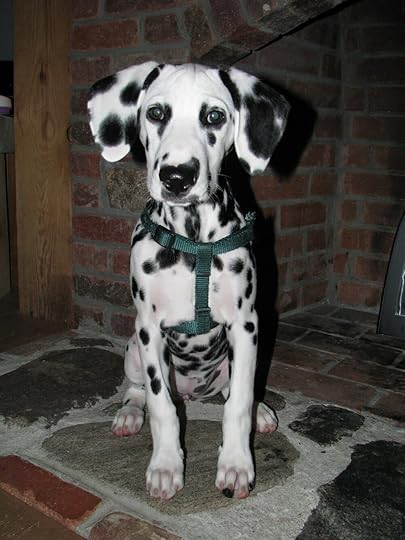
This important information is provided by Petfinder. Our preparation and expectations of our new family members are critical to success. The first few days in your home are special and critical for a pet. Your new dog will be confused about where he is and what to expect from you. Setting up some clear structure with your family for your dog will be paramount in making as smooth a transition as possible.
Before You Bring Your Dog Home:
Determine where your dog will be spending most of his time. Because he will be under a lot of stress with the change of environment (from shelter or foster home to your house), he may forget any housebreaking (if any) he’s learned. Often a kitchen will work best for easy clean-up.
If you plan on crate training your dog, be sure to have a crate set-up and ready to go for when you bring your new dog home. Find out more about crate training your dog.
Dog-proof the area where your pooch will spend most of his time during the first few months. This may mean taping loose electrical cords to baseboards; storing household chemicals on high shelves; removing plants, rugs, and breakables; setting up the crate, and installing baby gates.
Training your dog will start the first moment you have him. Take time to create a vocabulary list everyone will use when giving your dog directions. This will help prevent confusion and help your dog learn his commands more quickly. Not sure which commands to use? Check out How to Talk to Your Dog.
Bring an ID tag with your phone number on it with you when you pick up your dog so that he has an extra measure of safety for the ride home and the first few uneasy days. If he is microchipped, be sure to register your contact information with the chip’s company, if the rescue or shelter did not already do so.
First Day:
We know moving is stressful — and your new dog feels the same way! Give him time to acclimate to your home and family before introducing him to strangers. Make sure children know how to approach the dog without overwhelming him. Go here for more on introducing dogs and children.
When you pick up your dog, remember to ask what and when he was fed. Replicate that schedule for at least the first few days to avoid gastric distress. If you wish to switch to a different brand, do so over a period of about a week by adding one part of new food to three parts of the old for several days; then switch to half new food, half old, and then one part old to three parts new. For more information about your dog’s diet, check out our section on Dog Nutrition.
On the way home, your dog should be safely secured, preferably in a crate. Some dogs find car trips stressful, so having him in a safe place will make the trip home easier for him and you.
Once home, take him to his toileting area immediately and spend a good amount of time with him so he will get used to the area and relieve himself. Even if your dog does relieve himself during this time, be prepared for accidents. Coming into a new home with new people, new smells and new sounds can throw even the most housebroken dog off-track, so be ready just in case. Need more housetraining tips? Check out our Dog Housetraining section.
If you plan on crate training your dog, leave the crate open so that he can go in whenever he feels like it in case he gets overwhelmed. Also, be sure to check out the do’s and don’ts of crate training your dog.
From there, start your schedule of feeding, toileting, and play/exercise. From Day One, your dog will need family time and brief periods of solitary confinement. Don’t give in and comfort him if he whines when left alone. Instead, give him attention for good behavior, such as chewing on a toy or resting quietly (Source: Preparing Your Home For A New Dog).
For the first few days, remain calm and quiet around your dog, limiting too much excitement (such as the dog park or neighborhood children). Not only will this allow your dog to settle in easier, but it will also give you more one-on-one time to get to know him and his likes/dislikes.
If he came from another home, objects like leashes, hands, rolled up newspapers and magazines, feet, chairs, and sticks are just some of the pieces of “training equipment” that may have been used on this dog. Words like “come here” and “lie down” may bring forth a reaction other than the one you expect. Or maybe he led a sheltered life and was never socialized to children or sidewalk activity. This dog may be the product of a never-ending series of scrambled communications and unreal expectations that will require patience on your part.
Following Weeks:
People often say they don’t see their dog’s true personality until several weeks after adoption. Your dog may be a bit uneasy at first as he gets to know you. Be patient and understanding while also keeping to the schedule you intend to maintain for feeding, walks, etc. This schedule will show your dog what is expected of him as well as what he can expect from you.
After discussing it with your veterinarian to ensure your dog has all the necessary vaccines, you may wish to take your dog to group training classes or the dog park. Pay close attention to your dog’s body language to be sure he’s having a good time — and is not fearful or a dog park bully. If you’re unsure of what signs to watch for, check out this video on safety at the dog park.
To have a long and happy life together with your dog, stick to the original schedule you created, ensuring your dog always has the food, potty time, and attention he needs. You’ll be bonded in no time! For more information on creating a feeding schedule for your dog visit How Often Should You Feed Your Dog?
If you encounter behavior issues you are unfamiliar with, ask your veterinarian for a trainer recommendation. Select a trainer who uses positive-reinforcement techniques to help you and your dog overcome these behavior obstacles. Visit Dog Training for more information on reward-based training.
Congratulations! If you follow these tips, you’ll be on your way to having a well-adjusted canine family member.
Special appreciation goes to Petfinder.com for providing great information and opportunities to adopt a pup in need. “Rescue is our breed of choice,” Traveling Two Dogs.
November 15, 2020
Holiday Food Warnings from Hogan's Hope
I really enjoy writing blogs that offer our readers and followers important information that safeguards our dogs. Sometimes, it’s just pure fun information, and other times it’s critical to the well-being of our pets, including our deaf dogs.
Once again, I am honored to be able to share with you an article from the wonderful Your Dog Advisor. Jesse, Editor at Happy DIY Home, approached us and asked if we would include this life-saving article from their sister site, Your Dog Advisor. This gives you an important, even critical, list of foods that must be avoided all the time, not just during the holiday seasons. These items are more prevalent as we celebrate, and we must take extra special care to keep our beloved animals away from harm. Deaf dogs are especially vulnerable because they cannot hear our loud corrections, “NO!” before quickly grabbing and gobbling down the delicious treat. It’s gone before we can get to them, and our deaf dogs are put in a possibly life-threatening situation.
Read carefully and post the list where you can refer to it often!(Modified and posted with permission from Your Dog Advisor, November 10, 2020)
What Can Dogs Not Eat? 12 Dog Foods to AvoidWhat can dogs not eat? The holidays are a time of family and feasting, and they are a special time to share with your dog. The winter season is as magical for your pet as it is for you. They’ll love to watch you decorate and investigate wrapped gifts in wide-eyed wonder, but it’s important to remember that this is a dangerous time of the year for pets.
The holidays are one of the busiest times of the year for veterinarians. With the temptation of toxic treats, dangerous décor, and poisonous plants, the potential for a mishap skyrockets. To make sure the holidays are worry-free for you and your dog, here are twelve dog foods to avoid.
Contents
3. Currants, Raisins, or Grapes
11. Turkey Bones and Trimmings
1. ChocolateOne of the infamously toxic foods for dogs, chocolate contains theobromine and caffeine, and it can be deadly if enough is eaten. Chocolate puts stress on a dog’s heart and nervous system and can cause pancreatitis. During the holidays and all other days, keep chocolate far out of reach.

A dog’s nose can cause all kinds of trouble. Don’t leave toxic food in reach, for their sake!
2. Xylitol
Xylitol is a hidden danger for dogs that might go unnoticed. It’s an ingredient that’s often overlooked and is extremely toxic to dogs. Xylitol is used as a sweetener in many foods, including sugar-free foods, candy, some peanut butter, and chewing gum. If you are absolutely set in sneaking your dog a bite of peanut butter or anything baked just make sure it does not contain Xylitol. And candy—well, candy is never good for dogs, so it’s best to keep that away in general.
3. Currants, Raisins, or GrapesA lot of people know that grapes are toxic for dogs, but this danger extends to raisins and currants as well. These can cause a serious impact on your dog’s kidneys. So, when you’re making your favorite fruitcake or breaking out the currants for a seasonal dish, be sure not to share—or put them anywhere that your pup can reach.
4. AlcoholSome holiday traditions involve breaking out the spirits for a drink, but be sure to keep alcohol away from your dog. Liquor can kill a small dog even in small amounts, and even less concentrated drinks (such as beer) can be dangerous. Wine is doubly dangerous with grapes and alcohol involved. Even if you’ve seen or heard of other people sharing a drink with their dog… don’t do it. It’s not worth risking your dog’s life.
5. CaffeineOther dangerous drinks to watch out for during the holidays include coffee and tea. Caffeine from any source is bad news for canines, so keep those peppermint mochas, lattes, and Earl Greys out of reach.
6. NutsI know what you’re going to say—you give your dog peanut butter all the time, so what’s the big deal? The fact is that nuts are a mixed lot for dogs. Some of them, like peanuts and almonds, they can get away with in small doses. Others, like macadamia nuts, are extremely toxic and can cause serious sickness. Although nuts are rarely fatal for dogs, certain types like the macadamia can cause vomiting and fever. They also present a choking hazard. If you put out a bowl of nuts during the holidays, make sure it isn’t within your dog’s reach. And unless you know a particular nut is safe, it’s better to avoid sharing as a precaution.
Remember, too, that peanuts are not a true nut.
7. GarlicGarlic is another one of those invisible ingredients that can cause harm to your dog. It’s easy to forget that a dish has garlic cooked into it. Mashed potatoes seem innocent enough, and you might be tempted to drop a spoonful for your furry friend. If those potatoes were cooked with garlic, though, they should be kept far away from your dog. Garlic can cause damage to red blood cells, and even if it doesn’t show any immediate symptoms, it can cause long-term damage such as anemia.
8. Onions and ChivesOnions and chives are closely related to garlic and share the same danger. They damage red blood cells and have the potential to cause anemia in the long-run. Like garlic, your dog might not present any symptoms when they eat onions or chives, but eating it causes invisible damage that catches up later in life.
9. MushroomsMushrooms, like nuts, are a complicated case. Many mushrooms are safe for dogs—but some are not. Mushrooms are also influenced by where they are grown, and what conditions they are grown under. Your best bet is just to keep mushrooms away from your dog to be safe. There are too many risks, and the wrong mushroom can cause anything from stomach upset to seizures or death.
10. Unbaked Dough (Yeast)If you’re baking anything with yeast, keep the dough away from the edge of the counters and guard it closely. If your dog eats unbaked dough, it will produce ethanol in their system and the dough can expand in their stomach, causing severe stomach pain. Bread is not great for dogs, but if you are stubborn about sharing, wait until after it’s cooked.
11. Turkey Bones and TrimmingsEveryone’s heard the phrase ‘give a dog a bone,’ but what they don’t tell you is that when poultry bones are cooked, they become brittle and splinter easily. As excited as your dog might be over fragrant turkey bones perched tantalizingly on the platter nearby, don’t let them take that risk. It can perforate their esophagus, stomach, or intestines and put their life in serious danger. Instead, save a piece of turkey meat just for your dog. They will absolutely love it, and it is a safe way to indulge. Stay away from giving your dog raw meat or trimmings, though, as anything with a high-fat content can make your dog sick.
12. EggnogIf your dog slurps eggnog out of your mug while you’re distracted, chances are they will probably be fine. But, eggnog is not good for them, either. A lot of dogs are lactose intolerant, and nutmeg is toxic to dogs in high concentrations. Combine that with potentially raw eggs and a lot of fat and sugar, and you end up with a drink that isn’t very dog-friendly. There’s a chance eggnog could make your dog sick, so save yourself and your dog some trouble by keeping this holiday staple out of tongue’s reach.

Gunther the beagle stares down a cup of hot eggnog with hopeful eyes.
Other Holiday Hazards:
Toxic foods aren’t the only thing your dog might be tempted by this holiday season.
Antifreeze is extremely poisonous despite its sweet scent and taste.
Electrical wires and string lights can shock your dog if chewed through, and
Decorations such as tinsel, ornaments, or wrapping paper can range from a sharp shard hazard to a choking hazard to potential blockages if ingested.
Certain holiday plants are poisonous to dogs, as well. Poinsettia is the most well-known, but watch out for mistletoe and holly, too.
Although it seems like the holidays are filled with a long list of potential poisons, there are plenty of safe treats that you can share with your dog.
Green beans,
sweet potatoes,
turkey, and
cranberries
These are all safe and festive treats that your dog will love. And, as long as you’re vigilant with the wrapping paper, you can include your dog in any gift-giving, too. More than anything, though, they will appreciate the extra time spent together.

Joey the beagle dreams of holiday treats, unaware of how dangerous some of them can be.
Hope this guide on what can dogs not eat was helpful. These foods and items should be kept away from your dog to avoid any potential issues all year, every day!
ONE LAST ITEM: (Baker’s dozen!)
Be VERY careful with uncooked rice. Like unbaked dough, the uncooked rice will expand in our dear pets’ stomachs. NOT good!!!
Happy Holidays!!October 7, 2020
Halloween and Our Dogs - Our Deaf Dogs as well
Halloween is fast approaching and attention must be given to our precious pets. For me, that means that I must focus on what my deaf dog, Judea, needs, wants, likes, and dislikes. Precautions need to be recognized for all our animals but especially those who are deaf or have other special needs.
First, Judea is deaf and can’t hear treat-or-treaters approaching. I don’t want her to be startled even though she has been desensitized to sudden movements, appearances, or vibrations. I always sign for her to “look” as people arrive. I also pay attention in the event that other animals are walking the trail with their families.
She also loves to run after flashing lights in hopes of “catching” these beams in her teeth. Paying particular attention to these sudden bursts of light from the flashlights carried by our two-legged, costumed visitors is mandatory. She just might go chasing after the light, following them down long driveway or road. Believe me, it would be a very funny sight watching me, arms waving hysterically above my head, trying to catch Judea’s peripheral vision in order to beckon her to return.
The remainder of the article is from a blog that I posted last year. It warrants repeating. Please take good care of our deaf dogs, other pets, and visitors so no undesired events occur. Make it a fun evening - IF your neighborhood is still able to have Halloween amidst this pandemic. These important guidelines apply to parties or other celebratory, candy-gathering times.
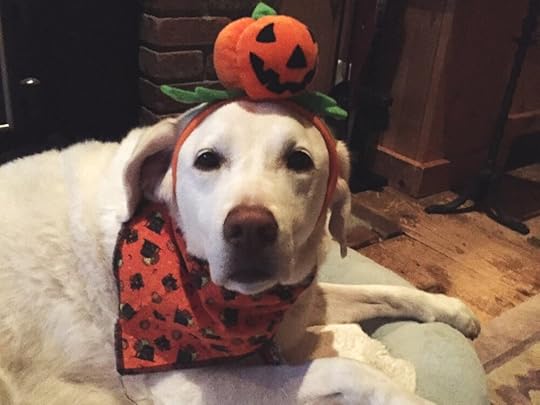
Clarence, my amazing service dog
Halloween is holiday that can be great fun for our trick-or-treaters but can be the source of stress for our pups. And, keeping our pets safe is important and actually quite easy if we keep their needs in mind. The ASPCA makes some simple recommendations for keeping them safe and happy.
Number 1 on their list is the candy:
Candy is for the human trick-or-treaters and can be toxic to our pets. "Chocolate in all forms—especially dark or baking chocolate—can be very dangerous for cats and dogs, and sugar-free candies containing the artificial sweetener xylitol can cause serious problems in pets. If you suspect your pet has ingested something toxic, please call your veterinarian or the ASPCA Poison Control Center at (888) 426-4435 immediately." Candy wrappers are a threat as well, causing stomach upset and even deadly blockages.
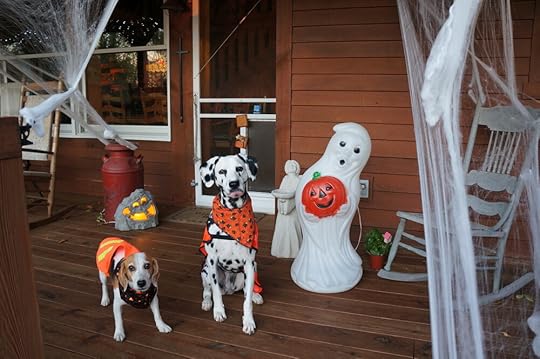
Number 2 is the decorations
Keep decorations out of reach. While things like pumpkins, corn, glow sticks, etc. aren't big threats, they can cause severe stomach upset.
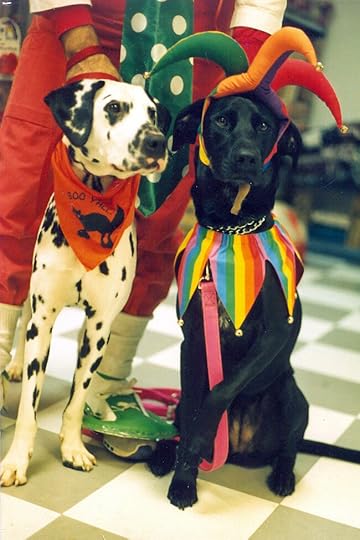
Number 3 is costumes
I love to dress my pups up for most holidays BUT I watch closely for any indications that they don't like the costume. We do not want to cause unnecessary stress. Costumes should never cause risk or infringe on eyesight, breathing, movement, or being able to express themselves with a bark or meow. Keep it simple. I use a headband or just a holiday scarf for one of my pups.
Number 3 is safety
I always make sure that I have an identification collar or tag on my pups before the visitors of Halloween arrive. I even have reflecting collars on them so they are more visible in the darkness. If they do escape, they can be returned to me more easily. One of my pups needs to be kept in a completely separate part of the house because the costumes are a bit too overwhelming. NO STRESS! NO WORRIES! Our pups depend on us to provide safety, security, and well being.
If your dog has any potential to jump up, nip, or bite, PLEASE secure him or her in another room. We must not only consider the safety of our visitors, but we don't want to encounter the slightest chance of losing our dog in a legal suit.
Remember
If you suspect that something is going to create an unsafe or stressful situation, please provide your wonderful and loving pet an alternative. Remember, too, that our deaf dogs need extra security!
September 30, 2020
Idiopathic Head Tremors in Our Dogs
Article shared with permission by Jean Miller, editor at Jen Reviews, from July 21, 2019 by Your Dog Advisor Staff, Your Dog Advisor.
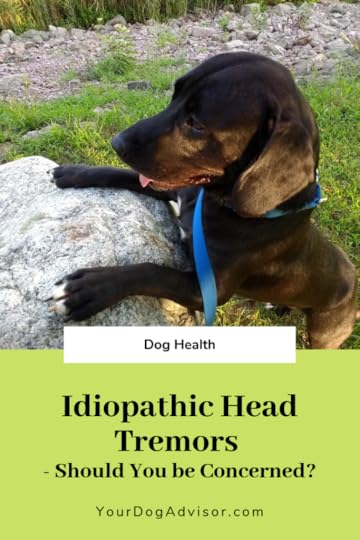
When Capa, my Labrador Retriever mix, sat in his chair with his head bobbing up and down uncontrollably, it freaked me out. My dog is healthy overall, and I wasn’t told about any health problems or chronic conditions when I adopted him.
Still, here he was with his head shaking as if he had developed Parkinson’s disease. His eyes were open, he didn’t seem distressed, and he looked at me and wagged his tail when I said his name. The tremors stopped after a couple of minutes.
I was worried so I did some research. Soon I came across a bunch of information on idiopathic head tremors.
Contents
What are idiopathic head tremors?
Which breeds are most affected?
Are there treatments available?
What are idiopathic head tremors?Idiopathic head tremors are characterized by a dog’s head bobbing up and down or shaking from side to side. The shaking isn’t violent and is sometimes so subtle you don’t see it at first. Episodes are short and in the middle of one, the dog is totally aware of what’s going on around him. Some dogs don’t even notice them.
The problem here is that there are tons of conditions that cause tremors in dogs. “Idiopathic” means that the cause of the tremors is unknown. So how can you tell if they’re idiopathic or caused by something a specific condition? Well, the only way to find that out for sure is by visiting your dog’s veterinarian. Lab results, blood work, and any other tests will come back normal if your dog has this condition

When your dog has new and unusual symptoms, it’s hard not to be afraid. Always get your dog tested if you’re concerned, so you know how to handle the situation. Photo is self-taken.
What are the symptoms?
Idiopathic head tremors can be easily confused with focal seizures and other health conditions. The main symptom to look for is a repeated nodding or shaking of the head. In fact, there shouldn’t be any other symptoms at all.
During an episode, your dog is completely alert and should respond when you talk to him. Episodes stop and start seemingly at random, but they don’t last more than five minutes or so. They’re unpredictable and their frequency depends on the individual dog. My dog can go months without having an episode, and then have two in a week. Some dogs have more than one in a single day. Others still might only have one in their entire life.
A video showing an English Bulldog having idiopathic head tremors. The person taking the video feeds him Greek yogurt as a distraction, which eventually helps to stop the tremors.
There are some symptoms that are NOT associated with idiopathic head tremors. It’s helpful to know what they are, both for your peace of mind and so you can report the problem to the vet.
If your dog has any of these symptoms, it’s a sign of a different condition and he should be seen by a veterinarian as soon as possible:
Poor coordination
Unresponsiveness
Pain or injury
Behavioral changes (fear, aggression, etc.)
Vomiting or diarrhea
What causes them?At this point, no one knows. Idiopathic head tremors happen when muscles in the head and neck contract involuntarily. There are many theories on what triggers an episode, but here are some of the more common ones:
Movement disorders like dyskinesia – This basically means that your dog experiences involuntary muscle movements that some people – veterinarians included – may mistake for seizures.
Excitement and overstimulation – This happens with my dog sometimes. If he’s been home alone for a while and we come back or if he’s excited for his morning walk, every now and then I’ll notice the tremors. Sometimes the episode stops as soon as I put his leash on.
Nerve abnormalities – Nerve abnormalities can be very broad and no specific neurological disorders have been linked to idiopathic head tremors. However, because nerve abnormalities can cause involuntary movements, it is possible that they are linked to idiopathic head tremors.

Too much excitement is one possible cause for head tremors in dogs. This is sometimes the case with Capa, especially when he greets us after work. Photo is self-taken.
The cause varies between dogs. Capa’s attacks coincide with a few different things. Sometimes it’s excitement about a walk. Other times, he’s lying down on his side holding his head up and looking at the ceiling. He holds the position for so long that after a while, his head starts to shake. It could be as simple as his neck muscles getting tired and that triggers an episode.
If you can, keep track of your dog’s episodes. Pay attention to what’s happening before they start, what your dog is doing, if there’s anything that might have overstimulated or exhausted him, or if he appeared stressed before the tremors started. Keep a log of the attacks and look back on it to check for any patterns.
Should I be worried?The short answer is probably not. That said, if your dog is having head tremors, you should bring him to the vet just to be sure nothing is seriously wrong. Any tremors that continue to happen without known reason are considered idiopathic until a different diagnosis is found.
Idiopathic head tremors are usually diagnosed after all other potential problems have been ruled out. If everything looks normal in the tests and your dog isn’t experiencing any other symptoms or pain with the tremors, there’s no cause for immediate concern.
The tremors shouldn’t affect your dog’s appetite, energy level, or temperament at all, and the only time you’ll notice symptoms is during an episode. If your dog is otherwise healthy and acting normal, there’s no need to worry.
Which breeds are most affected?Any dog can experience idiopathic head tremors, including mixed breeds. They’re more common in young or middle aged dogs but can show up at any time in a dog’s life. They affect male and female dogs equally. Some dogs are more prone to them, but no one has figured out why.
These breeds tend to be more susceptible to developing idiopathic head tremors:
Bulldog
French Bulldog
Boxer
Labrador Retriever
Doberman Pinscher

Capa is a Lab/Basset mix. Since he has at least one breed prone to idiopathic head tremors in his lineage, that increases his chances of getting them. Photo is self-taken.
Capa is a three-year-old Lab/Basset hound mix. I adopted him from a local shelter, and since then he’s had somewhere between 7 and 10 of these episodes. I don’t know his medical history from before I adopted him, but the tremors could have started anytime from when he was a few months old onward. For all I know, he may not have had them before I adopted him.
If a mixed breed dog’s lineage includes one of the aforementioned breeds, he’s still got a higher chance of having idiopathic head tremors. My dog probably has more than just Lab and Basset lineage, and he may be a mix of other breeds prone to the condition. There’s no way to know whether your dog will develop the tremors until they actually show up.
What to do during an episodeWhen you’re watching your pup’s head shake, of course you want to step in and make it stop. Even now, knowing that my dog’s tremors don’t hurt him, I get worried just because it’s unexpected.
These tips can help you get through your dog’s episodes and hopefully keep you calm, too:
Most importantly – don’t panic! Your dog isn’t hurt, and you don’t want to scare him unnecessarily.
Time the episode using your phone or a stopwatch. It might feel like it lasts forever, but it won’t. Knowing how long each episode is for your dog can ease your mind, and if you’re getting him checked by a veterinarian, you’ll want to give as many details as possible.
Distract your dog. Since your dog is alert through the episode, call his name or shift his attention to a favorite toy or treat. Sometimes the distraction is enough to stop the attack. (I find that this approach works well with Capa.)
Be patient and wait for it to stop. If distraction doesn’t work, the tremors will stop on their own after a few minutes.
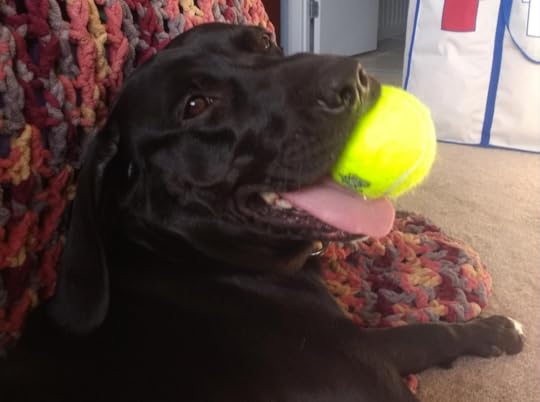
Distracting your dog with a toy can help stop the tremors. Capa’s favorites are squeaky tennis balls! Photo is self-taken.
How are they diagnosed?
Idiopathic head tremors are usually diagnosed once everything else has been ruled out. There are lots of conditions that can cause similar symptoms. A lot of the time, people mistake these tremors for different types of seizures, and there are plenty of other types of tremors caused by injury or illness.
A veterinarian can rule out any major issues with these tests:
Ophthalmic exam
MRI
CSF analysis
If all of the tests come back with no problems, that’s when your veterinarian may consider idiopathic head tremors as the diagnosis and give you more information on what to do when your dog has an episode.
Are there treatments available?Most of the time, idiopathic head tremors don’t require treatment. There are no drugs available to treat them specifically, as no single treatment can cover all potential causes. However, the tremors don’t respond to other medications, like anti-seizure treatments. Since there’s no way of knowing at this point what causes the tremors, it’s hard to know how to stop or prevent them.
The good thing is that the lack of treatment won’t cause your dog harm. The only form of “treatment” is to distract your pup with treats or tricks and to keep him calm during an episode.
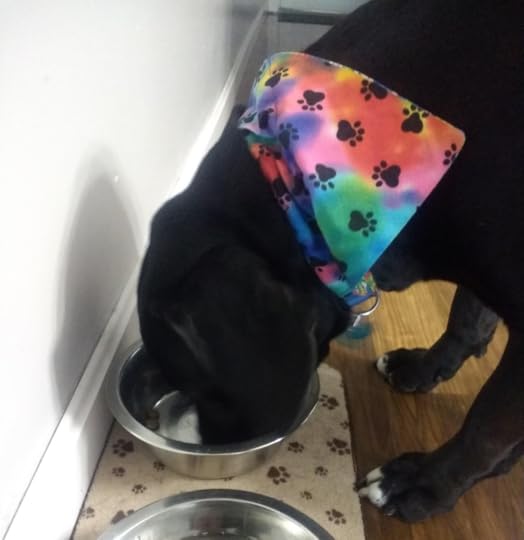
Your dog’s appetite shouldn’t be affected by idiopathic head tremors. Sometimes food or treats can help your dog snap out of an episode, so make sure you always have some on hand. Photo is self-taken.
Other types of head tremors
If you’re not sure what’s going on with your dog or if he’s just recently started having symptoms, it’s good to know how to recognize other types of tremors. Knowing what you’re looking at leads to a faster and more accurate diagnosis.
Here are some other types of head tremors that might look similar but can come with other symptoms:
Focal seizures
Generalized Tremor Syndrome
Epilepsy or other kinds of seizures
Neurological disorders
Any of these disorders can potentially harm your dog, which sets them apart from idiopathic head tremors. They might include some of the symptoms listed earlier in this article and may manifest more consistently or dramatically.
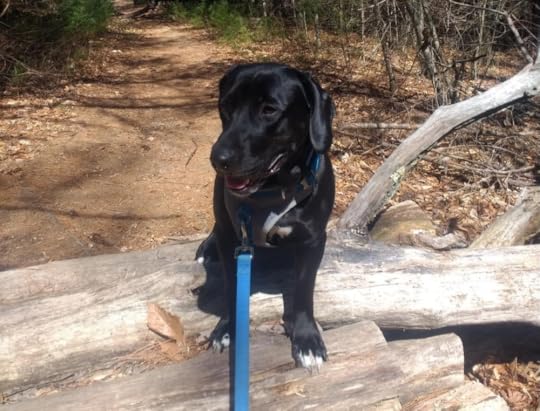
Take your pup for a nature walk as a distraction! Sometimes dogs (like Capa) get so excited at the sight of the leash alone that it will stop an episode. Plus all the smells along the trails will keep him occupied. Photo is self-taken.
Your dog can still lead a happy and healthy life with idiopathic head tremors. They don’t cause or worsen other health problems or alter his quality of life in any way. You can still take him on long walks, he’ll still be happy to see you when you get home, and he’s still the same good boy he’s always been!
September 2, 2020
Deaf Dog on Lauren's Crazy Pet Show
Lauren Collier visited our home to highlight how wonderfully special our deaf dogs are in our families. She called our Judea, my service dog extraordinaire, a “Miracle Dog!” Of course, I completely agree.
Judea came into our lives at eight-weeks of age. She had been discarded because she was deaf. The Dalmatian rescue group in Pennsylvania knew about Hogan, our first deaf dog, who made international fame and brought international attention to these special family members. After calling us and inquiring if we would be willing to adopt a deaf puppy, my husband, Jim, and I were filled with great excitement. We drove from Connecticut to Pennsylvania, taking Clarence, my yellow Labrador and service dog, along to meet his new sister. The rest is history.
Watch and enjoy!



